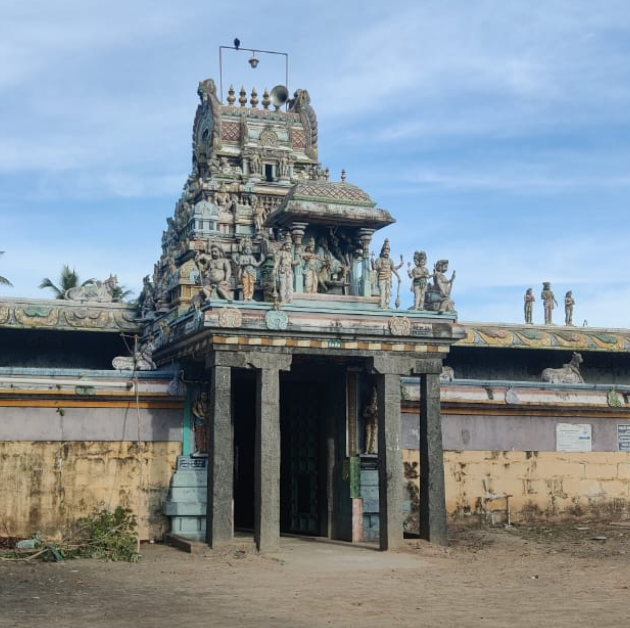Sage Vamadeva, seeking relief from a curse he had incurred, visited many Shiva sthalas. When he reached this place, he rested under an Arasu tree, contemplating how wonderful it would be if Lord Shiva were present there. Sensing the sage's wish, Lord Shiva appeared as a swayambumurthy (self-manifested deity) beneath the tree, relieving Vamadeva of his curse. Overwhelmed with gratitude, the sage took a bath in the nearby spring, installed the Linga, and began worshipping. As Lord Shiva had appeared under the Arasu tree, He came to be known as Arasaleeswarar, and the place was named Arasili.
In the following days, the Shivalinga mysteriously disappeared. During the rule of the Chalukya king Satyavradhan, a devout Shiva worshipper who had no children, a garden was created, and a new Shivalinga was installed in the same spot. The king regularly worshipped the Linga, but one day his servant noticed that the flowers in the garden had disappeared and informed the king. Initially dismissing the matter, the king eventually decided to investigate. He secretly watched the garden in the early morning hours and discovered that a deer was eating the flowers. Angered, the king shot an arrow at the deer, but the deer managed to escape and hid in a hole in the Arasu tree. The king, assuming the deer was wounded, shot an arrow at the tree, causing it to bleed. When he investigated, he found no deer but only the long-lost Shivalinga. The king, realizing the divine presence, bowed before the bleeding Lord and sought His blessings. Lord Shiva appeared before the king, revealing that the deer was, in fact, Himself, and blessed the king with children. The temple was later constructed through the efforts of the king.
Administration History :
The temple's administration has a long history, with inscriptions revealing that it was under the patronage of various Chola kings, including Vikrama Chozha and Kulothunga Chozha, who made endowments for perpetual lamps and other services. Over time, the temple's upkeep continued under the stewardship of local communities and religious institutions. Currently, the temple is managed by the Hindu Religious Endowments Department, ensuring its regular maintenance, rituals, and festivals. The temple has undergone restoration, with significant events like the Kumbhabhishekam in 1985, contributing to its continued preservation and reverence.
